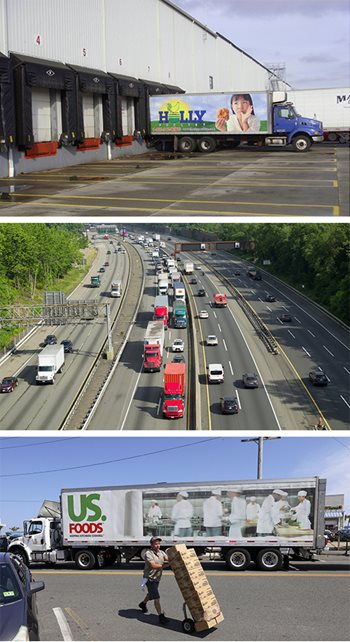 Fuel prices and shortages of drivers and parking are among the trucking industry’s biggest challenges as it returns to some semblance of normalcy after three years of pandemic-related upheaval. That was the assessment of two trucking industry experts at the NJTPA’s Freight Initiatives Committee meeting on February 21 which featured the committee’s annual Trucking Industry Update.
Fuel prices and shortages of drivers and parking are among the trucking industry’s biggest challenges as it returns to some semblance of normalcy after three years of pandemic-related upheaval. That was the assessment of two trucking industry experts at the NJTPA’s Freight Initiatives Committee meeting on February 21 which featured the committee’s annual Trucking Industry Update.
Darrin Roth, vice president, highway policy, for the American Trucking Associations (ATA) said “The freight market is a little worse than the macro economy, for a number of reasons,” but overall it’s moving back to historical norms after a spike in demand during the pandemic.
Consumers have moved back to the service economy after high demand of consumer goods over the past almost three years of the pandemic, he said. A significant drop in housing starts is expected this year due to rising mortgage rates with somewhat of a recovery in 2024. Spending on construction via the Infrastructure Investment and Jobs Act , Roth said, “will mitigate some of this, which is not all bad news for this sector.”
He said there was a fairly significant drop-off in contract loads in 2021 not due to demand but supply. Trucking companies were unable to find enough equipment and drivers to meet demand so they went to the spot market, which saw a huge increase, according to Roth.
But as shippers went back to contract carriers, the spot market “fell off a cliff” in 2022, Roth said. “If you’re a contract carrier, you’re doing OK, you’re seeing a bit of downturn. If you’re in the spot market, you’re just being killed,” he said.
While the driver shortage peaked in 2021 at about 80,000 drivers and now is easing, all is not well for the long term. By 2031,Roth estimates a doubling of the shortage to about 160,000 drivers. “If this happens, supply chain disruptions are going to be significant,” he said. The U.S. is not unique as the driver shortage is a worldwide problem. “It’s not just a case of just ‘Pay them more and you’ll find more drivers.’ We have a worldwide demographic problem.”
While there is a very high driver turnover rate, the vast majority is not drivers leaving the industry but rather churn within the industry as drivers leave for more money or recruiting bonuses, according to Roth. At the same time, the industry is facing other rising costs including fuel, insurance premiums, equipment and maintenance.
“What does that mean? Potentially a lot of bankruptcies, particularly for small carriers,” said Roth.
Roth described the New Jersey and the larger northeast region as “the epicenter” for truck driver and parking shortages. A recent Department of Transportation survey indicated that 98 percent of drivers said they experienced difficulty finding a safe place to park in 2019, compared with 75 percent in 2015. That’s a safety problem that also becomes a productivity problem, Roth said.
The critical nature of truck parking was echoed in a presentation by Jeff Short from the American Transportation Research Institute. He reported on his organization’s survey of thousands of industry executives, commercial drivers, stakeholders and others. While fuel prices and the driver shortages topped the list of concerns, truck parking was third overall. For commercial drivers, it was first.
He said whether at private facilities in rural areas or public rest areas in the Northeast, truckers often are parking along on- and off-ramps of these areas because there simply is not enough spaces. The challenges to addressing the shortage include cost of land, zoning laws and community concerns, with “folks not necessarily wanting a truck parking location near them.“
His organization also looked at the age of drivers which continues to rise. Going back 25 to 30 years, Short said the largest category of drivers used to be 25- to 34-year-olds, which today make up less than 20 percent of drivers. The two largest demographics are 45- to 64-year-olds, which is not sustainable, he said, and the industry must shift that curve to attract younger adults.
A recording of the Freight Initiatives Committee meeting is available here. Slide presentations are here.